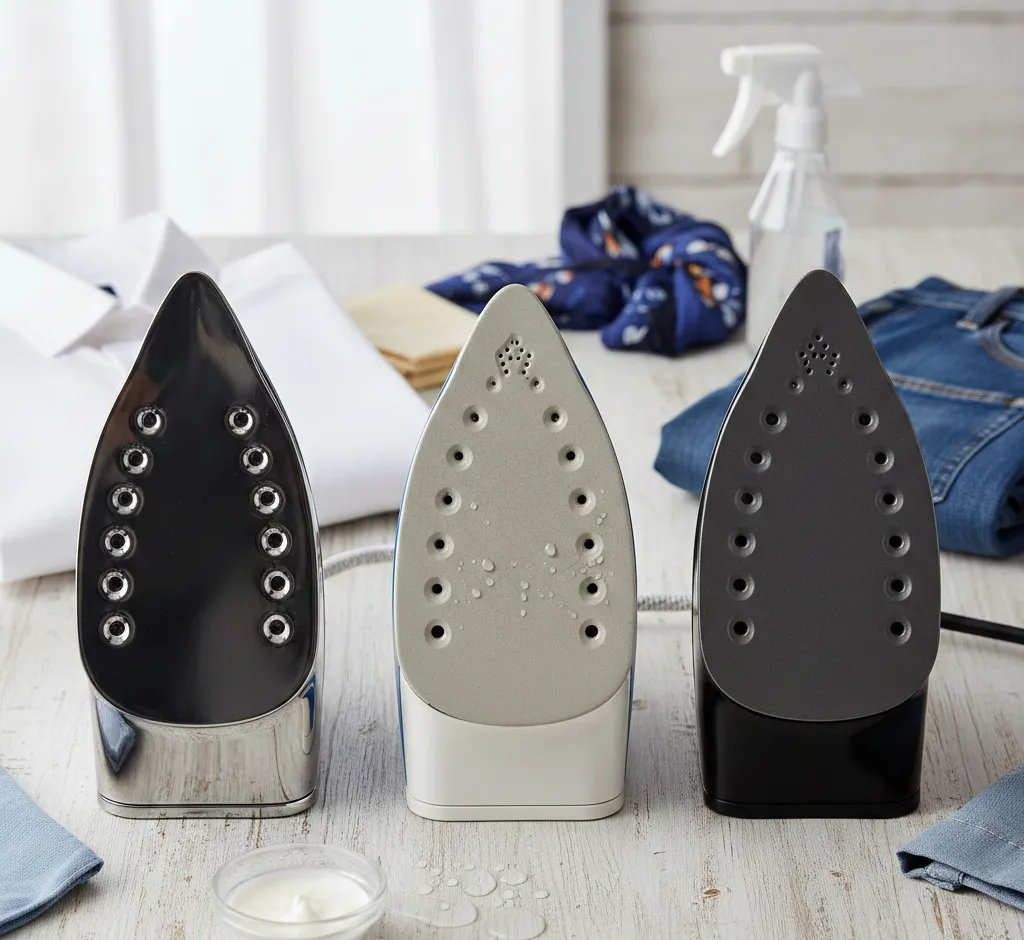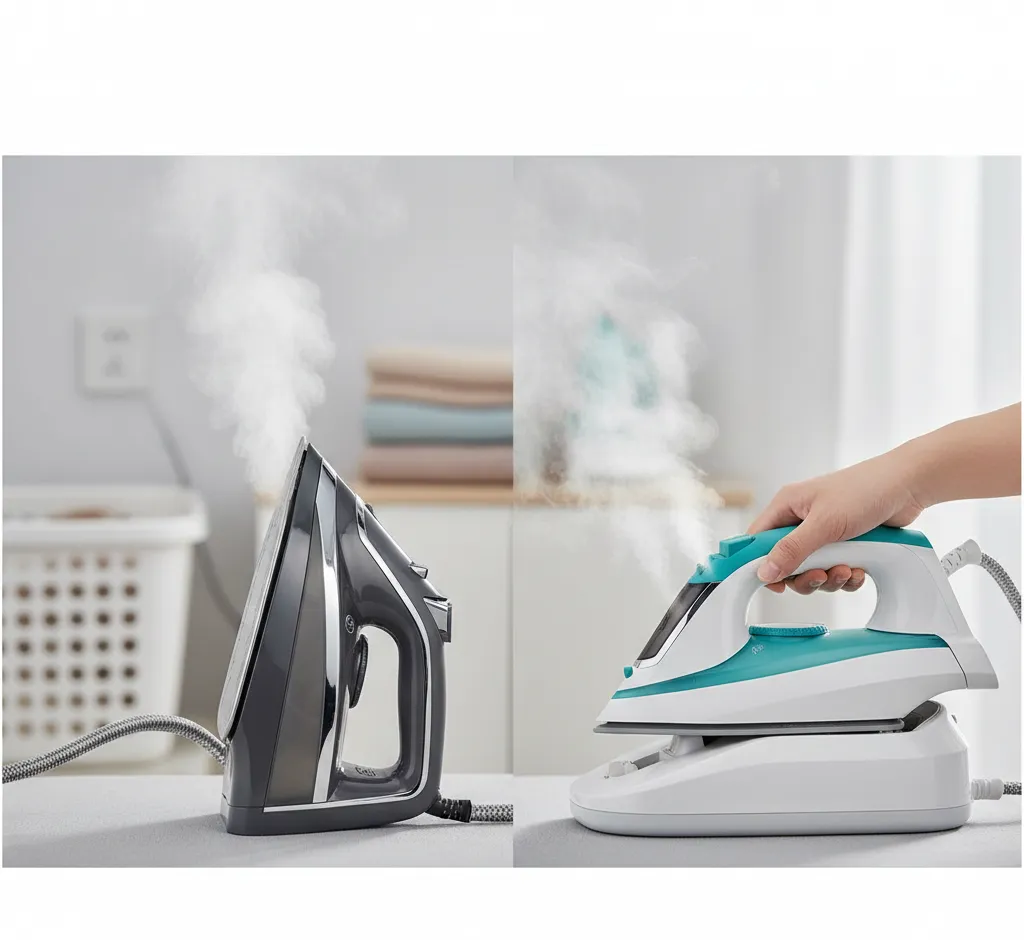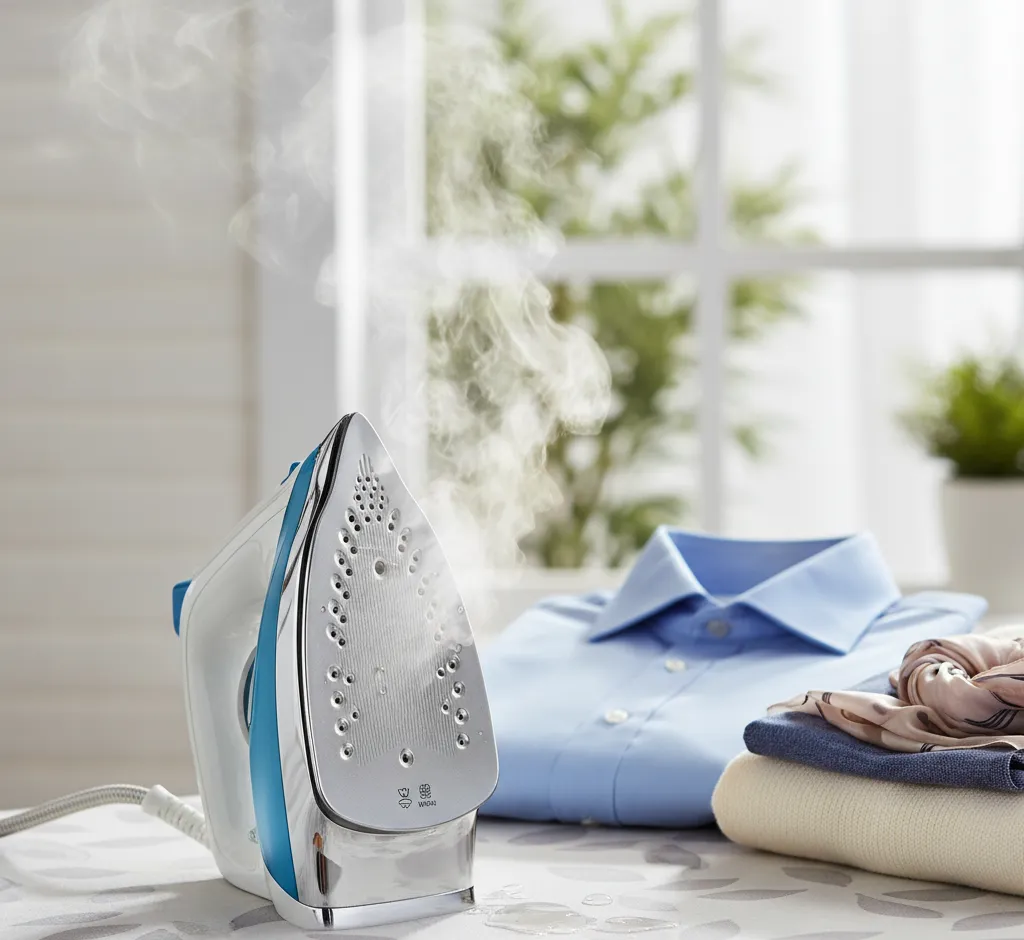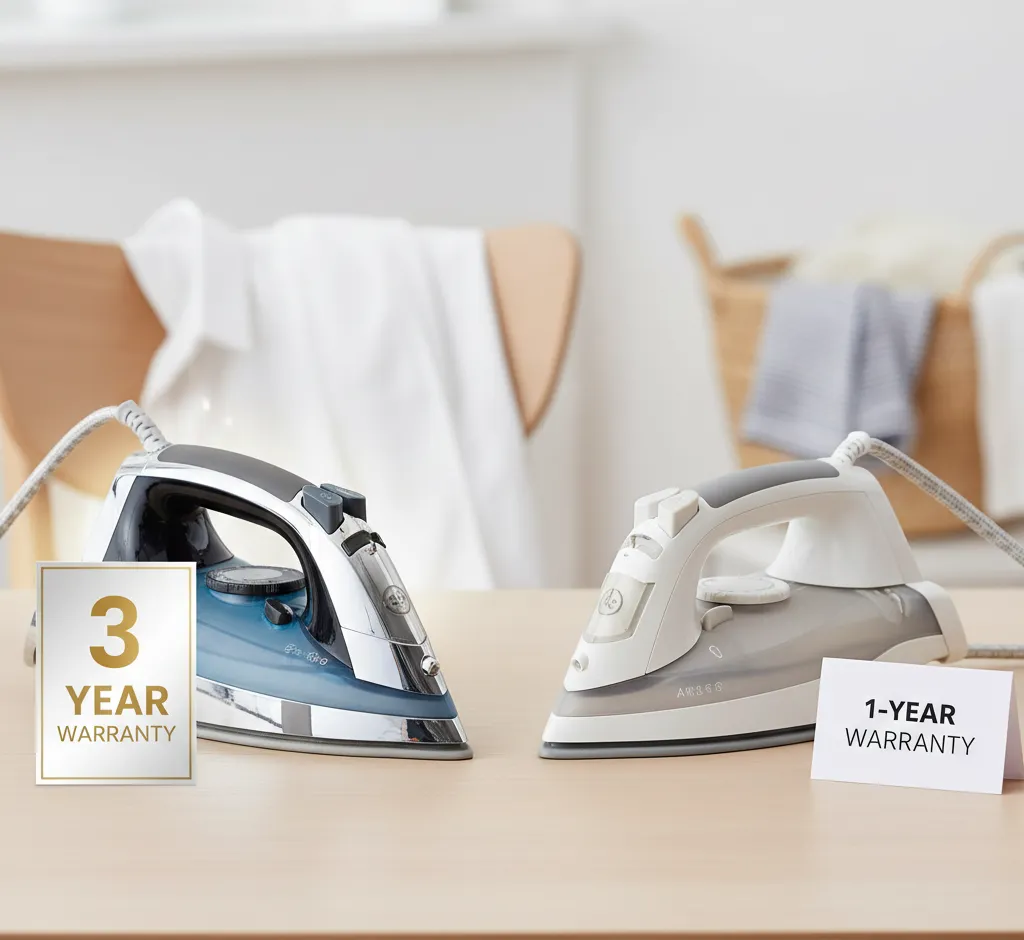The Ultimate Guide to Steam Iron Soleplate Materials: Stainless Steel, Ceramic, and Beyond
A comprehensive guide for home buyers explaining steam iron soleplate materials: Stainless Steel, Ceramic, Non-Stick, Titanium, and more. Compare pros, cons, and maintenance to choose the best iron for your clothes.

The Ultimate Guide to Steam Iron Soleplate Materials: Stainless Steel, Ceramic, and Beyond
Choosing a new steam iron can feel overwhelming. Beyond wattage and steam output, the most critical—and often misunderstood—factor is the material of the **soleplate**. The soleplate is the heart of your iron, the surface that comes into direct contact with your delicate and heavy fabrics. It determines everything from how smoothly your iron glides to how evenly it heats, how long it lasts, and how easily you can clean it. Understanding the pros and cons of the leading soleplate materials—Stainless Steel, **Ceramic**, and the various **Non-Stick** coatings—is the single most important decision you'll make to ensure a fast, efficient, and snag-free ironing experience.
The Big Three: Stainless Steel, Ceramic, and Coated Non-Stick
While manufacturers market many proprietary names and technologies, most modern iron soleplates fall into three main categories. We will break down each one to help you determine which material is the best fit for your specific ironing needs and budget.
1. Stainless Steel Soleplates: The Durable Workhorse
Stainless steel is arguably the most traditional and enduring material for iron soleplates. It is a highly polished, chromium-alloyed steel that offers exceptional durability and performance.
✅ Pros of Stainless Steel:
- Superior Glide: When polished to a mirror-like finish, stainless steel provides an exceptionally smooth, low-friction glide across most fabrics, reducing the effort required for ironing.
- Extreme Durability: This material is highly resistant to scratches, dents, and chips. Unlike coated plates, the surface is uniform, meaning scratches won't expose a base layer or cause peeling.
- Excellent Heat Conduction: Stainless steel heats up very quickly and maintains a consistent, steady heat across the entire plate, making it highly effective for pressing sharp creases into natural, heavy-duty fabrics like denim, linen, and cotton.
- Easy to Clean: Stains, starch, or melted synthetic fibers can typically be cleaned off with common household items and gentle abrasion without damaging the surface. It is non-corrosive and resists staining from colored fibers.
❌ Cons of Stainless Steel:
- Weight: Stainless steel irons tend to be heavier than their aluminum or coated counterparts, which can be an advantage for tough creases but tiring for large loads.
- Potential for Sticking/Shine: If the temperature setting is too high for synthetic fabrics, a stainless steel plate is more prone to melting delicate fibers, which then stick to the plate and can create a shiny patch on the garment.
- Static Electricity: In some environments, stainless steel can generate static, especially when ironing synthetic materials.
Verdict: Stainless steel is the best choice for those who prioritize **longevity, minimal maintenance, and the ability to handle large volumes of heavy fabrics** like cotton, denim, and linen with crisp, professional results. It’s a tried-and-true investment.
2. Ceramic Soleplates: The Even-Heating Specialist
Despite the name, a true 'ceramic soleplate' is not made of solid ceramic. It is an aluminum or plastic plate that is coated with a **non-stick ceramic layer** (often a silicon-based ceramic) which is baked or bonded to the core. This coating is what gives the plate its unique performance characteristics.
✅ Pros of Ceramic:
- Smooth, Non-Stick Glide: The ceramic coating provides a very smooth, effortless glide and is naturally non-stick, which is ideal for delicate and synthetic fabrics.
- Exceptional Heat Distribution: Ceramic is prized for its ability to distribute heat very evenly and consistently across the surface. This helps prevent 'hot spots' that can scorch fabric.
- Anti-Static Properties: The ceramic material can help to neutralize static electricity, preventing synthetics from clinging.
- Gentle on Synthetics: The non-stick surface is less likely to melt and adhere to synthetics, reducing the risk of scorching or staining.
❌ Cons of Ceramic:
- Durability Concerns: The primary drawback is that the coating can wear down, chip, or peel over time, especially if scratched by zippers, buttons, or abrasive cleaning. Once the coating is compromised, the base material (usually aluminum) is exposed, which can snag and scorch clothes.
- Maintenance: The coating is sensitive to abrasive cleaners; you must use soft cloths and mild solutions, which can make removing stubborn, sticky residue more difficult.
- Potential for Color Transfer: The porous nature of the ceramic coating can, in some cases, absorb dyes or colors from fabrics, leading to a discolored soleplate.
Verdict: Ceramic is a fantastic option for those who iron a mix of fabrics, particularly **delicates, synthetics, and everyday clothing** where a smooth, non-stick, and scorch-resistant surface is paramount. However, it requires more gentle care.
3. Coated Non-Stick Soleplates (Teflon, Durathon, etc.)
The term 'non-stick' refers to a wide array of coatings applied to an aluminum or other metal base. The most famous is PTFE (commonly known as Teflon), but modern irons use improved materials like enamel or Hamilton Beach's **Durathon**, which claims to be ten times more durable than traditional non-stick coatings.
✅ Pros of Coated Non-Stick:
- Maximum Anti-Adhesion: These coatings offer the highest level of non-stick capability, meaning melted synthetics are far less likely to stick to the plate.
- Heat Safety: Non-stick coatings can often operate at higher temperatures without the same risk of scorching as bare metal.
- Lightweight: Irons using these coatings are typically built on lighter aluminum cores, making them easier to maneuver for long ironing sessions.
❌ Cons of Coated Non-Stick:
- Questionable Glide: While non-stick, some users find the glide to be less smooth and more 'grippy' compared to polished stainless steel.
- Longevity: Like ceramic, non-stick coatings are susceptible to scratching and flaking over time, leading to reduced performance and the eventual need for replacement.
- Heat Retention: Aluminum cores, while fast to heat up, do not retain heat as effectively as stainless steel, which can lead to temperature fluctuations.
Verdict: Choose non-stick if you frequently iron **synthetics, delicate blends, or use a lot of starch**, and want maximum peace of mind against sticking. Look for advanced coatings like Durathon for improved longevity.
The Premium & Niche Soleplate Materials
Beyond the primary three, some high-end and specialty irons utilize unique materials, often as coatings, to further enhance performance.
Aluminum Soleplates
Aluminum is often used as the base metal for coated plates due to its low cost and excellent heat conductivity—it heats up very quickly. However, a bare aluminum soleplate is rarely seen in modern steam irons because it is a **soft metal that scratches easily**, is prone to oxidation, and can feel sticky on fabrics. It requires constant cleaning and care.
Titanium Soleplates
Titanium is often used as an incredibly durable coating, similar to ceramic but offering superior scratch and chip resistance. **Titanium-coated** soleplates offer the best of both worlds: the smooth, non-stick glide of a coating with the durability and longevity of a metal-based iron. They heat up very fast and are extremely tough against everyday wear and tear.
Palladium Soleplates
Found almost exclusively in top-tier European brands (such as Bosch/Siemens's 'PalladiumGlissée'), this is not a solid palladium plate (a very expensive precious metal), but rather a **specialized palladium-based ceramic coating**. Its primary benefit is a highly scratch-resistant, smooth surface with a unique self-cleaning catalytic action. The coating has micro-structures that are designed to dissolve residue during the ironing process, keeping the steam vents and soleplate clean for long-term optimal steam performance.
Comparison at a Glance: Which Soleplate is Right for You?
| Feature | Stainless Steel | Ceramic-Coated | Non-Stick Coated (PTFE/Enamel) | Titanium-Coated |
|---|---|---|---|---|
| Heat Distribution | Excellent, very consistent | Exceptional, eliminates hot spots | Good, depends on core metal | Excellent, very fast and even |
| Glide/Smoothness | Superior (especially when clean) | Very Smooth/Non-Stick | Good, but can sometimes feel 'grippy' | Superior, non-stick and low friction |
| Durability/Longevity | Highest (Resists scratches/chips) | Moderate (Coating can wear/chip) | Moderate (Coating can wear/flake) | Very High (Highly scratch-resistant) |
| Cleaning Ease | Easy (Can handle gentle abrasives) | Difficult (Requires gentle, non-abrasive methods) | Easy (Residue is less likely to stick) | Easy (Highly resistant to residue) |
| Best for... | Heavy fabrics (Linen, Denim), Sharp Creases, Longevity | Delicates, Synthetics, Even Heat, Anti-Static | Synthetics, Starch-heavy items, Preventing Sticking | All-purpose, Durability and Performance Balance |
Maintenance and Care for Your Soleplate Material
The soleplate's longevity and performance are inextricably linked to proper care. Here is how to keep each type of material in top condition.
Caring for Stainless Steel
The main enemy of stainless steel is residue from melted synthetics or built-up starch, which reduces its famous glide.
- For Starch/Light Residue: Use a paste made of **two parts baking soda to one part water** (or white vinegar). Apply the paste to the cooled soleplate with a soft cloth and gently rub in circular motions. Wipe clean with a damp cloth.
- For Sticky/Melted Residue: Heat the iron to a low setting, unplug it, and rub it over a pad of non-gel toothpaste, or over a sheet of newspaper sprinkled with coarse salt. The warmth helps to soften the residue, and the salt acts as a very mild, non-scratching abrasive.
- Cleaning Steam Vents: Use a cotton swab dipped in **white vinegar** to clean out mineral deposits from the steam holes.
Caring for Ceramic and Non-Stick Coatings
The cardinal rule for coated soleplates is: **NO ABRASION**. Never use scouring pads, steel wool, or harsh, grainy pastes, as these will destroy the coating.
- Routine Cleaning: Wipe the cooled soleplate with a soft, damp, lint-free cloth after every few uses to prevent light residue build-up. A simple solution of **mild dish soap** and water is usually sufficient.
- For Sticky Residue: Make a cleaning solution of **equal parts white vinegar and distilled water**. Soak a clean cloth in the solution and gently wipe the warm (not hot) soleplate.
- Stubborn Stains: If you have a stubborn melted plastic stain, heat the iron slightly (low setting), unplug it, and use a **wooden spatula or plastic scraper** to gently nudge the softened residue off. Then follow up with the vinegar/water solution.
- Soleplate-Specific Cleaners: Consider purchasing a commercial iron cleaner stick, which is specifically formulated to be non-abrasive and safely remove residue from coated plates.
The Final Decision: Matching the Iron to Your Lifestyle
Your ironing frequency and the type of clothes you own should dictate your final choice:
- The Enthusiast/Heavy User: If you iron multiple times a week, deal with large loads, and prioritize crisp, sharp creases on heavy cotton and linens, you need the **durability and pressing power of Stainless Steel**.
- The Everyday/Delicate User: If you iron mostly work shirts, synthetics, silks, or frequently use starch, the **smooth, non-stick, and anti-static properties of a Ceramic-Coated** iron will offer the best blend of speed and fabric protection.
- The Modern Performance Seeker: If budget allows, an advanced material like **Titanium or Palladium-based coating** offers a premium experience, combining the glide and non-stick benefits of ceramic with the superior scratch resistance of metal.
Ultimately, a high-quality soleplate—regardless of material—should heat quickly, distribute heat evenly, and glide smoothly without snagging. By understanding the core characteristics of each material, you are equipped to move past the marketing jargon and select an iron that will serve your wardrobe perfectly for years to come.


